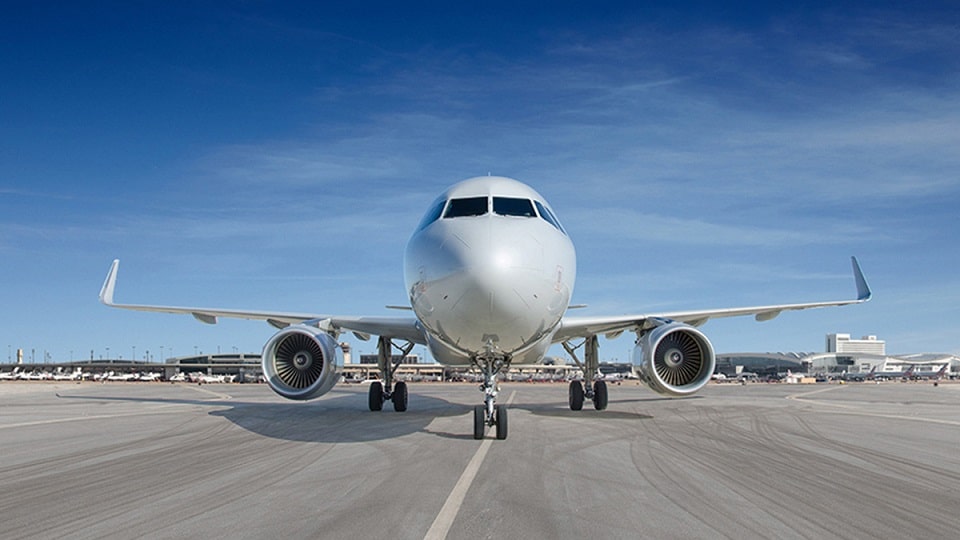Airlines
American Airlines takes part in groundbreaking study on avoiding contrails

In an effort to lessen aviation’s environmental impact, American Airlines released the findings of a groundbreaking study on contrail avoidance. The study’s findings were supported by satellite images.
When an aeroplane passes over moist air layers, contrails develop. Depending on the circumstances, they might last for a few minutes or several hours as cirrus clouds. During the day, these extra clouds can bounce sunlight back into space, but at night, some contrails can trap heat inside the Earth’s atmosphere.
How Etihad intends to combat contrails while crossing the Atlantic(Opens in a new browser tab)
The study, led by Google Research and Breakthrough Energy and with support from American, tested whether it is possible to identify atmospheric zones that are likely to create contrails. The team then determined whether pilots could avoid making contrails in flight when supplied with data regarding the location of these zones.
Google Research and Breakthrough Energy created contrail forecast maps using artificial intelligence (AI) after gathering massive data sets, including satellite photography, weather, and aircraft path data. Over the course of six months, a small group of American pilots completed 70 flights while making minor adjustments to routes that were expected to produce contrails based on AI-based projections.
EASA issues AD to address unsafe conditions with Airbus A350 lavatories(Opens in a new browser tab)
Google Research examined satellite images after the test flights and discovered that flights where pilots utilized the AI predictions to prevent forming a contrail reduced contrail formation by 54%, as assessed by distance, in comparison to flights where pilots did not use the predictions. A commercial flight can verifiably avoid producing a contrail, as demonstrated by this first proof point, even though it only applies to a tiny number of flights. Additional research is necessary to determine if this success can be replicated and scaled.
American is attempting to increase the sustainability of its operations by utilising new technology, more fuel-efficient planes, and low-carbon fuel more frequently. The airline has established a number of ambitious intermediate goals in order to reach net-zero greenhouse gas emissions by 2050.

Airlines
Sanctions & Engine Issues Ground Half of Russia’s A320neo fleet

Russia’s aviation sector, already strained by Western sanctions, faces another setback as nearly half of its Airbus A320neo family aircraft are grounded due to unresolved engine issues.
This development highlights the growing challenges for russia commercial aircraft in maintaining their fleets under the weight of global restrictions and limited access to spare parts.
Out of the 66 Airbus A320neo and A321neo jets in Russia, 34 are now out of service, according to the Kommersant business newspaper. These planes are powered by engines manufactured by Pratt & Whitney, a subsidiary of RTX Corporation.
DAMAC Air: Dubai’s New Luxury Airline Offers Free Flights for Registration
The engines are affected by a previously identified defect in the metal used for certain parts, prompting accelerated inspections and maintenance.
Sanctions have compounded the issue, blocking the supply of essential components from major manufacturers like Boeing and Airbus. Without proper maintenance, experts warn that these aircraft may face decommissioning as early as 2026.
COMAC Unveils Plans for the C929 to Rival Airbus and Boeing
Airlines like S7, which operates a significant portion of these grounded jets, plan to conserve the engines for future use during peak travel seasons. However, reports suggest that over 20 of S7’s Airbus planes have engines that have already reached the end of their operational lifespan. Recently, russia seeks assistance from kazakhstan’s airlines to bolster its domestic flights.
While some A320neo and A321neo planes in Russia are equipped with French-made LEAP engines, which are seen as less problematic, the challenges remain daunting.
The situation underscores the long-term impact of sanctions on Russia’s aviation sector and the increasing difficulties in keeping its modern fleets operational.
-

 Aviation2 months ago
Aviation2 months agoMicrosoft Flight Simulator Raises $3 Million to Bring Back the An-225 Mriya
-

 Airlines2 months ago
Airlines2 months agoQantas Engineers Stage Walkout Over Cost of Living Concerns
-

 Airlines2 months ago
Airlines2 months agoQatar Citizens Can Travel to the United States Without a Visa
-

 Aviation2 months ago
Aviation2 months agoQatar Airways bans these new Electronic Devices on plane
-

 Airlines2 months ago
Airlines2 months agoJapan Airlines Rolls Out Free Domestic Flights to International Passengers
-

 Defence2 months ago
Defence2 months agoWhich Country Has the Largest Fleet of Fighter Aircraft?
-

 Airport2 months ago
Airport2 months agoWestern Sydney Airport Welcomes Its First Plane After 6 Years of construction
-

 Travel2 months ago
Travel2 months agoQatar Airways Launches Four Additional Flights from Amsterdam








